Norse mythology encapsulates the religious beliefs of ancient Scandinavian societies. Known by some as the religion of the Vikings, Norse myths were orally shared for hundreds of years before the introduction of Christianity. Tales of daring were told through skaldic poetry, while legends became permanently ingrained in the history of would-be nations. Today we’ll tackle the “known” of old Norse lore, as it has been interpreted from the 8th century onwards.
Table of Contents
What is Norse Mythology?

When someone says “Norse mythology,” one may think immediately of characters like Odin, Thor, and Loki. In some cases, they will be able to recall a single important myth, like Ragnarök. However, there is so much more richness within Norse myths than just a couple of memorable characters and an apocalypse.
Norse mythology refers to myths that are part of the Old Norse religion. Also called Nordic, Scandinavian, or Germanic mythology, Norse mythology is a collection of tales originating from centuries of oral tradition. The first complete written account of Norse mythology is from the Poetic Edda (800-1100 CE), a collection of Old Norse poems and myths written by various authors.
How Old is Norse Mythology?
Since so much of Norse mythology was based on oral traditions of Germanic peoples it is hard to pinpoint when exactly this ancient mythology began. Archaeological evidence suggests that Old Norse Mythology is at least 300 years older than the infamous Viking Age (793–1066 CE).
Where is the Norse Mythology From?
Norse mythology is the collective myths of Germanic tribes throughout ancient Germania and Scandinavia. It was the primary religion of the European north, until the introduction of Christianity (8th-12th centuries CE). Norse myths likely developed from the Proto-Indo-European mythology of prehistory.
Is Norse Mythology and Vikings the Same?
Norse mythology is the pagan system of beliefs that is usually associated with Vikings. However, not all Vikings continued their practice of the Norse religion after the introduction of Christianity and other religions. There are theories that on top of Christianity and Old Norse religion, Islam was also present in the northern regions, being introduced through the Volga Trade Route.
Otherwise, the popular 2013 show, Vikings did reflect some events in Norse mythology. In particular, Vikings artistically portrays the life of legendary 9th-century Viking, Ragnar Lodbrok. A few episodes and plot points do have larger Norse mythological implications involving some characters, such as Ragnar, his son Björn, and Floki (hm…that sounds somewhat familiar).
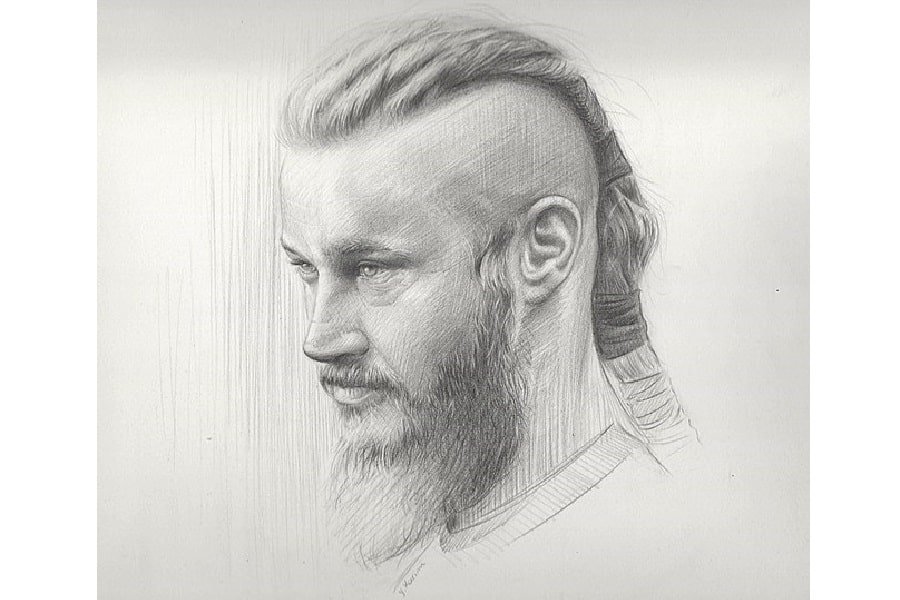
The Norse Gods and Goddesses
The old gods of Norse mythology are separated into two distinct groups: the Æsir and the Vanir. Somewhat akin to ouranic and chthonic deities, the Æsir and Vanir cover opposing realms. Despite this, there are a select number of Norse gods and goddesses that belong to both divine clans.
We can thank an ancient war for that! Once upon a time the Æsir and Vanir went to war. Lasting for years, the two clans only made up after an exchange of hostages, thus explaining why some Vanir are counted amongst the Æsir ranks.
Ancient Scandinavians viewed the gods as beings with the ability to offer protection, insight, and guidance. They were, by all accounts, dedicated to the affairs of Midgard; Thor, specifically, was considered to be the champion of man. The deities could be summoned, called upon, and manifested in times of need.
Interestingly enough, though they had the keystones of godhood, the Norse gods weren’t immortal. Their longevity was gained through the regular consumption of enchanted golden apples, which were kept by the goddess of youth, Idunn. Without the apples, the gods would suffer sickness and old age. So we guess you could say that an apple a day will keep old age away.
One notable thing is that Idunn’s apples did not equate to immortality. Even with the apples, the Norse pantheon was susceptible to death. Their mortality is especially highlighted in the myth of Ragnarök where (spoiler alert) nearly all of the gods die.
The Æsir
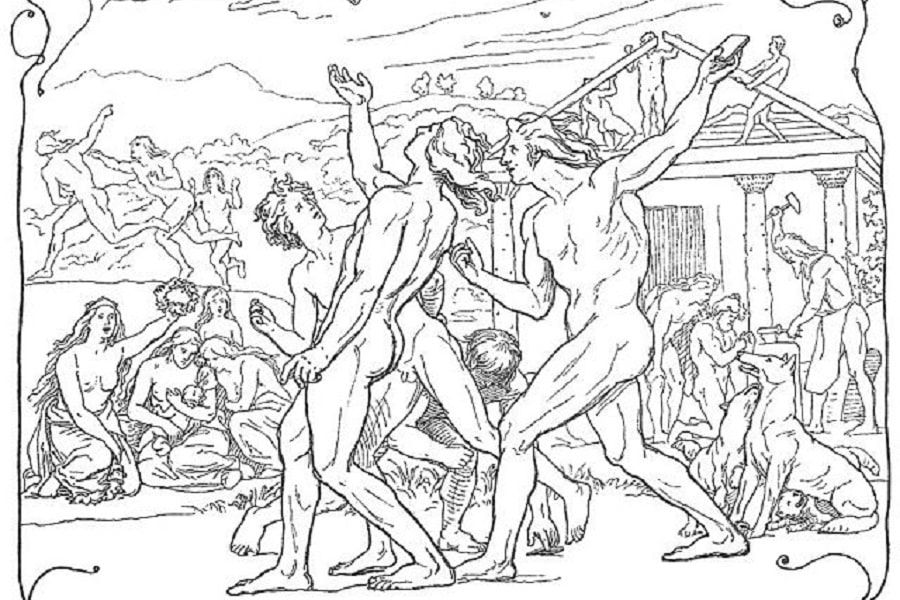
The Æsir gods and goddesses are the “major” Norse gods. They were more commonly worshiped compared to the Vanir, who had cults on a lower scale. Marks of the Æsir are strength, physicality, war, and wit. Modern veneration of the Æsir is called Ásatrú, which can combine polytheistic beliefs with ancestor worship.
- Odin
- Frigg
- Loki
- Thor
- Baldr
- Tyr
- Var
- Gefjun
- Vor
- Syn
- Bragi
- Heimdall
- Njord
- Fulla
- Hod
- Eir
- Vidar
- Saga
- Freyja
- Freyr
- Vali
- Forseti
- Sjofn
- Lofn
- Snotra
- Hlin
- Ullr
- Gna
- Sol
- Bil
- Magni and Modi
According to myth, the Æsir are descendants of Búri. Famous for being the progenitor of the Æsir, Búri was freed by the primeval cow Auðumbla from a mass of rime stones. He is described as being fair and mighty and would bear a son, Borr, the would-be father of Odin, Vili, and Ve.
The Vanir
Unlike the Æsir, the Vanir gods and goddesses are not descendants of Buri. Befitting of the mystical Vanir, their origin is somewhat of a mystery as well. The lore varies between the Vanir originating from Vili and Ve (who we otherwise don’t know much about) or beginning with the chthonic goddess, Nerthus. From then on, Nerthus either married or became the Vanir patriarch, Njord.
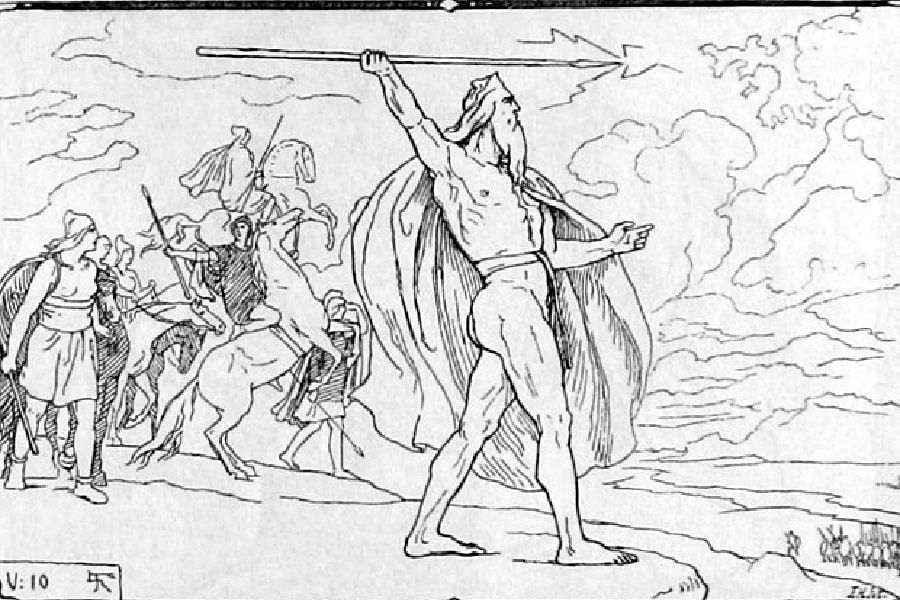
Who are the 3 Main Norse Gods?
Out of all the Norse gods, there were three that are considered the “main gods.” Sort of, at least. Odin, Thor, and Freyr were among the most revered of all the gods; thus, they could be considered the three main deities.
There is a theory that the Vikings and other Germanic peoples would change out their supreme deities. Of course, this varied throughout regions as well: no one was necessarily bound to have a specific god be above the rest. That being said, it’s thought that Tyr was initially the head of the pantheon, then Odin, and towards the end of the Viking Age Thor began to grow in popularity. Freyr had always been a fan favorite, with the god Ullr being significant enough to have numerous sites named after him.
Who is the Most Powerful Norse God?
The most powerful of the Norse gods is believed to be Odin, though there are a slew of powerful gods in the pantheon. Breaking everything down, Thor and Odin are just about neck-in-neck for the position of mightiest deity. Either god has some crazy magical buffs that certainly make them stand out above the rest.
Who is the God of War in Norse Mythology?
There are several gods of war in Norse mythology. By that, we mean most of the Æsir are associated with warfare. The Vanir? Not so much.
The main “god of War” is Tyr. What – were you expecting Kratos? In all seriousness, Tyr was the god of war – namely treaties – and justice. He was considered the bravest of the Æsir, having sacrificed his hand to bind the great wolf Fenrir.

Religious Practices of Norse Mythology
The religious practices linked to Norse mythology are scantly recorded. Honestly, we know almost next to nothing about the religious worship of ancient Germanic peoples: everything we think we know is inferred from later records – oftentimes through an outside perspective – and archaeological discoveries. Much of what we know is through the eyes of a Christian author, over one hundred years after the fact.
There are accounts of rites of passage, especially of those being incorporated into a family, whether by birth, adoption, or marriage. As for funerary rights, there is a lot of archaeological evidence available. Unfortunately, it appears that there was no exact principle to follow, as both burials and cremations occurred. It is unknown if there were certain funerary rites associated with the afterlife the deceased would go to, whether that was Valhalla, Fólkvangr, or Helheim.
Old Norse religious beliefs were steeped in polytheism and ancestor worship. While the major Norse pantheon included many gods and goddesses, individuals would also venerate their deceased family members. The family unit was extremely important, and the departed were believed to offer guidance from beyond the grave. More than that, though, ancient Germanic peoples were staunch believers in rebirth through generations.
Festivals
Most people love a good festival, and the ancient Norse are no different. Since there is limited information regarding all the festivities that would have been staged during the peak of Norse paganism, below is a collection of known festivals, many of which are in honor of pagan gods.
- Álfablót
- Dísablót
- Veturnáttablót
- Blōtmōnaþ
- Yule
- Mōdraniht
- Hrēþmōnaþ
- Sigrblót
Additionally, the historian Adam of Bremen had recorded that Uppsala would host a festival every nine years where nine males of every animal (humans included) were ritually hung in a sacred grove. This was likely a festival to honor Odin since hanging was innately tied to the deity. It relates to his sacrifice to gain all-knowing wisdom, which included giving his eye to Mimir’s Well; throwing himself onto his spear, Gungnir; and hanging from Yggdrasil for nine days and nine nights.
Festivals would be celebrated on large and small scales. Priestesses would usually lead the celebrations. Similarly, smaller festivals such as Álfablót – a sacrifice to the Elves – would be led by the women of the household.
Unlike some scholars’ beliefs, Viking women absolutely fit within the “Viking ethos.” Women undoubtedly had agency within the religion and based on our current knowledge, they enjoyed great amounts of equality within their societies. Although not all religious festivals were led by women, many were.
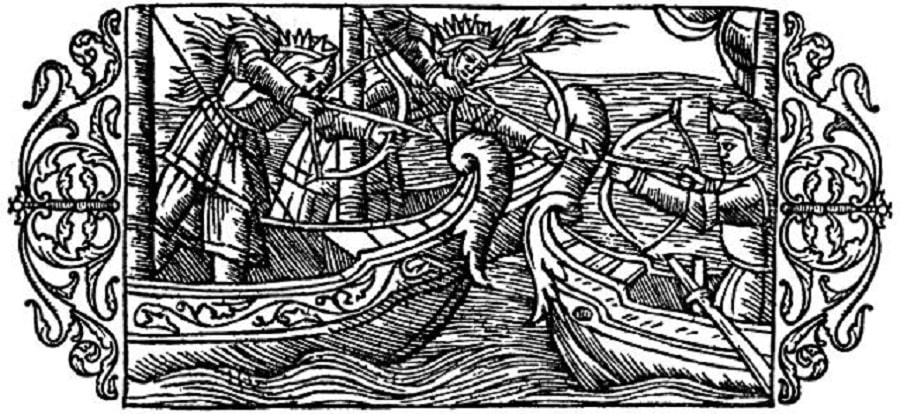
Sacrifices
As with most cultures throughout ancient history, there were sacrifices made to honor the Norse gods and goddesses. Whether through physical offerings, libations, sacrificial feasts, or blood the deities got their fair share of recognition.
The more common sacrifice recorded is blot, the sacrifice of blood. Usually, this was animal blood, although human sacrifices were practiced. Blood would be sprinkled over an altar. Alternatively, there are records of the heads and bodies of animals being suspended from a pole or a sacred tree.
As you can guess, animal sacrifices were commonplace. They were described in the Poetic Edda, Prose Edda, and several sagas from the time. The twins Freyja and Freyr accepted animal sacrifices, per written accounts, namely those of oxen or hogs. However, from all of the ritual sacrifices discovered, it has been difficult to tell what sacrifice was made to what god.
Human sacrifices were also heavily recorded by Adam of Bremen, describing individuals being ritually sacrificed through drowning, hanging, and sacrificial suicide. Moreover, the execution of criminal offenders and prisoners of war may have been carried out with sacral undertones. In more recent years, there has been the theory that bog bodies – mummies found in peat bogs – may have been human sacrifices. Treasures such as chalices, cauldrons, and royal wagons have also been discovered in bogs over the centuries.
Far from one in a million, disposing or depositing items in wetlands is a trend that archaeologists have noticed throughout Scandinavia. This seemingly ritualistic act continued from the 1st to the 11th centuries CE. The only comparable ritual deposits found on land have been in groves, suggesting that there was a religious significance to the wetlands.
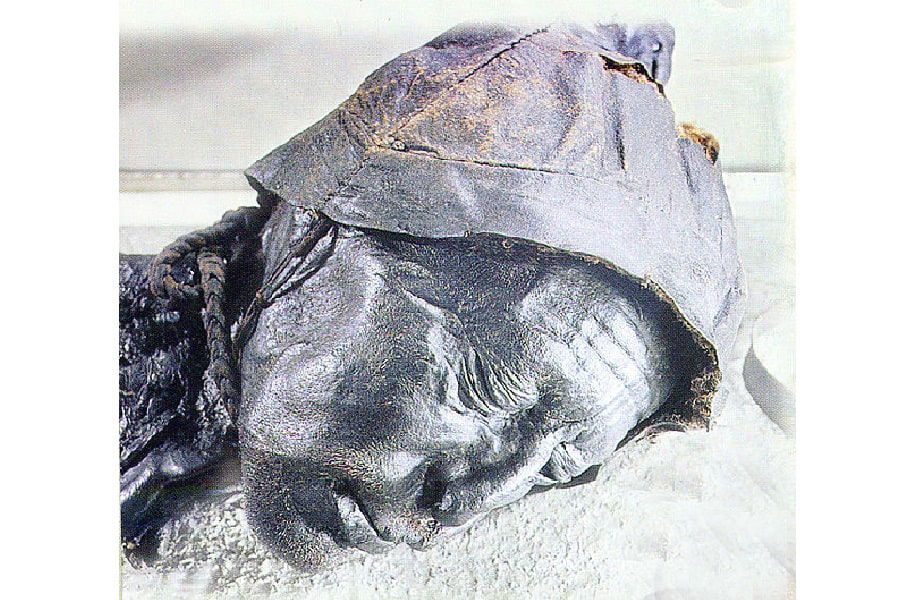
Cults
There is not much knowledge available on cults as they pertain to the Norse religion. Thus, we believe that veneration was interwoven with daily life, though the extent of which is currently unknown. It is thought that rites and rituals were performed in both private and public, though there are no first-hand accounts of such being the case.
Gods were worshiped individually and en masse; whether or not there were specific cultic rites tied to any specific myth can only be speculated. There are certainly implied connections, such as those described in the works of Adam of Bremen, but no direct, undeniable evidence. Just who the supreme deity appeared to have shifted with time and region; for example, Thor’s apparent cult was extremely popular throughout the Viking Age.
The Nine Worlds and Yggdrasil
According to Norse mythological tradition, there isn’t just the Heavens, Earth, and Underworlds. There were in fact Nine Worlds in the Norse universe that surrounded an ultra-mega world tree called Yggdrasil. These legendary Nine Worlds were as real as Midgard (Earth), the realm in which mankind would reside.
The realms of Norse myth are as follows:
- Asgard
- Álfheimr/Ljósálfheimr
- Niðavellir/Svartálfaheimr
- Midgard
- Jötunheimr/Útgarðr
- Vanaheim
- Niflheim
- Muspelheim
- Hel
The world tree Yggdrasil is situated in the center of the worlds, though is said to be slowly rotting. It is cared for by the three Norns, who tend to it with sacred water pulled from the Well of Fate (Urdarbrunnr). Yggdrasil has three distinct roots that reach into Hel, Jötunheimr, and Midgard respectively, and is described by historians as an ash tree. Furthermore, Yggdrasil had three important wells at its base, those being Urdarbrunnr; the “Roaring Kettle” Hvergelmir, where the great beast Nidhogg gnaws at the roots (and on corpses!); and Mímisbrunnr, better known as Mimir’s Well.
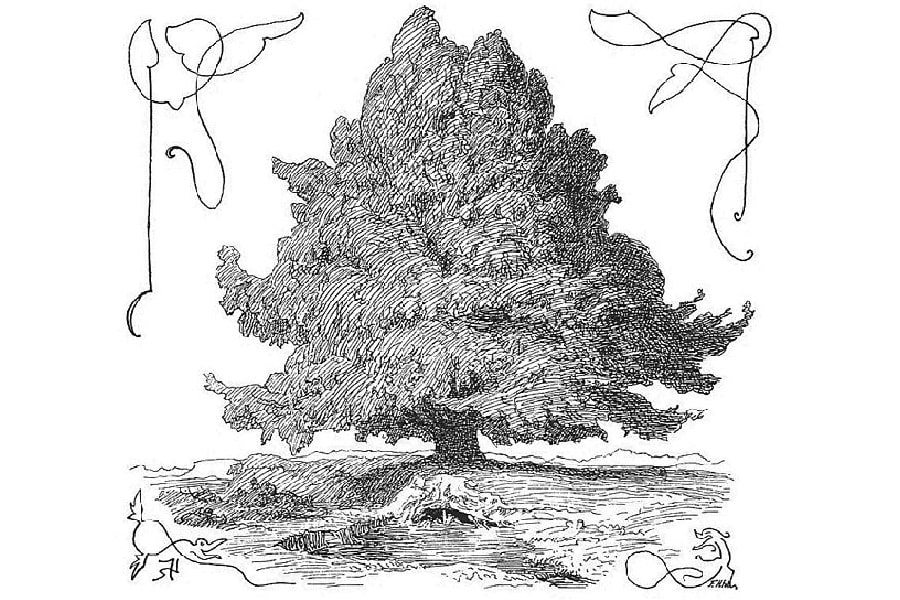
Myths and Legends of Norse Mythology
Someone once described Norse mythology as being a Dungeons and Dragons campaign where the Dungeon Master just never says “no.” To be fair, that’s an on-the-nose assessment. Though despite all the chaos that goes down in many known myths from ancient Scandinavia, there are two that are incredibly significant.
That’s right, folks: a creation myth and that one crazy apocalypse we mentioned a bit back.
The Creation Myth
The Norse creation myth is pretty straightforward. Odin and his two brothers, Vili and Vé, take the corpse of the jötunn Ymir and chuck him into the Ginnungagap. Since he is a giant, different parts of his body make up the world as we know it. So, yeah, we’re all existing on the dead body of a long-dead jötunn.
When it comes to the creation of mankind, that too was up to Odin and his brothers. Together, they created the first man and woman: Ask and Embla. Depending on the interpretation, Ask and Embla could have been found by the three deities or literally made out of two trees they found. Either way, Odin gave them life; Vili gave them their understanding; and Vé gave them their senses and physical appearance.
The Doom of the Gods
Now, as far as Ragnarök goes, it is perhaps one of the most retold tales of Norse mythology. Marvel has done it, there are graphic novels detailing the harrowing events, and pretty much most people know the general information about the infamous “Twilight of the Gods” (and no, we aren’t talking about a YA novel here).
Ragnarök was first mentioned by the völva that addresses a disguised Odin throughout the poem, Völuspá. She says, “Brothers will fight, bringing death to each other. Sons of sisters will split their kin bonds. Hard times for men, rampant depravity, age of axes, age of swords, shields split, a wind age, a wolf age, until the world falls into ruin.” So, it is pretty bad news.
During Ragnarök, the Nine Worlds and Yggdrasil fall to ruin, destroyed by Loki, the Jötnar, monstrosities, and the spirits of Hel. Neither the Jötnar nor the gods emerge victorious, with only a select number of deities surviving the ordeal. Of the residents of Midgard, only a man and a woman (Lif and Lifthrasir) live through Ragnarök. They would go on to venerate Baldr, Odin’s son, who is reborn as the ruler of the new world.
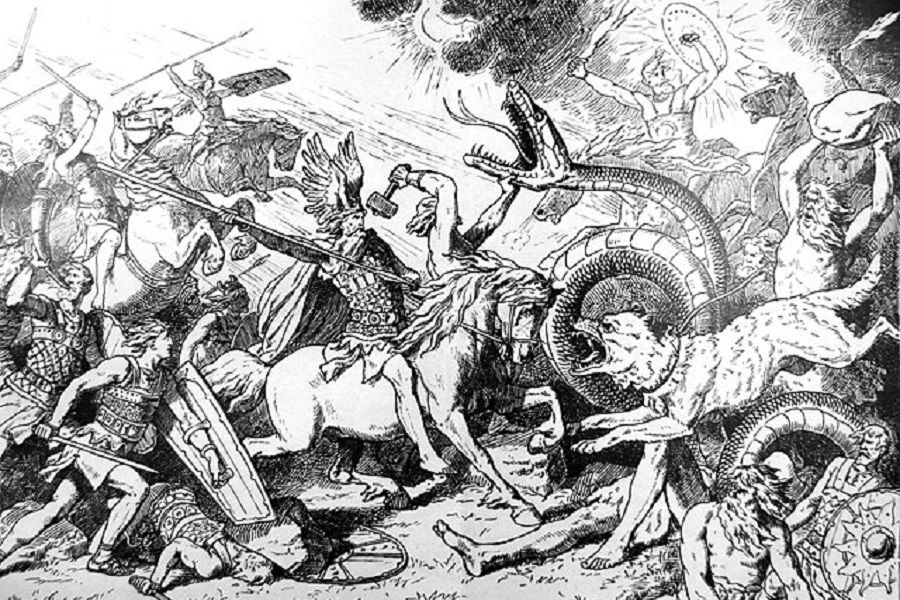
Heroes and Legendary Kings
There’s just something about hero tales that humanity adores. We love seeing our favorites beat the odds and save the day. Luckily, Norse mythology is far from short of heroes. Though set apart from the divine progeny heroes of Greek mythology, Norse heroes performed feats that were nothing short of miracles.
Interestingly enough, there are not many known demi-gods in Norse myths. Those that are mentioned don’t have extensive legends surrounding them. More often than not, they are usually outshined by broader culture heroes and legendary kings.
Below is a handful of heroes and legendary kings that are mentioned in a handful of Norse myths and literature:
- Arngrim
- Bödvar Bjarki
- Egil
- Gard Agdi
- Guðröðr of Skåne
- Gunnar
- Halfdan the Old
- Helgi Hundingsbane
- Herrauðr
- Högni
- Hrólfr Kraki
- Nór
- Ragnar Lodbrok
- Raum the Old
- Sigi
- Sigurð
- Sumble
- Sæmingr
- Thrymr

Mythical Creatures
While the main gods themselves are a fascinating bunch, there are many mythical creatures in Norse mythology that are deserving of attention. Though there are hapless beings that surround the world tree, Yggdrasil, other creatures inhabit other worlds (there are nine, after all). Some of these mythical creatures aided and abetted the gods only to later betray them. From dwarves to elves, to battle-hardened psychopomps, Scandinavian mythology had them all:
- Dáinn, Dvalinn, Duneyrr and Duraþrór
- Dísir
- Dökkálfar
- Dwarves
- Jötnar
- Ljósálfar
- Ratatoskr
- Sleipnir
- Svaðilfari
- The Rår
- Trǫlls
- Valkyries

Mighty Monstrosities
The monsters of Norse stories are downright frightening things. From the chilling undead to literal dragons, many monsters could chill one to the bone. Oh, and we can’t possibly leave out the many giant wolves with their insatiable hunger that are everywhere.
Looking at the sky? Yep, there are wolves up there chasing the sun and moon. Planning on taking a walk to clear your head? Careful, you may stumble across the canine son of Loki (who is very different from the serpent son of Loki). Even in death, there will be a huge, blood-drenched best boy waiting at the gates of Hel to howl at your arrival.
In Scandinavian mythology, monsters are in direct opposition to the gods. The Vikings believed that these beasts are inherently malevolent with no room for redemption. More than standing against the gods, the monsters of Scandinavian mythology are also suggested to stand against the current order. Most have distinct parts to play in the myth of Ragnarök, where the gods are destroyed and the world rises anew.
- Draugar
- Fáfnir
- Fenrir
- Fossegrim (The Grim)
- Garmr
- Hafgufa
- Jörmungandr
- Níðhöggr
- Sköll and Hati Hróðvitnisson
- The Kraken
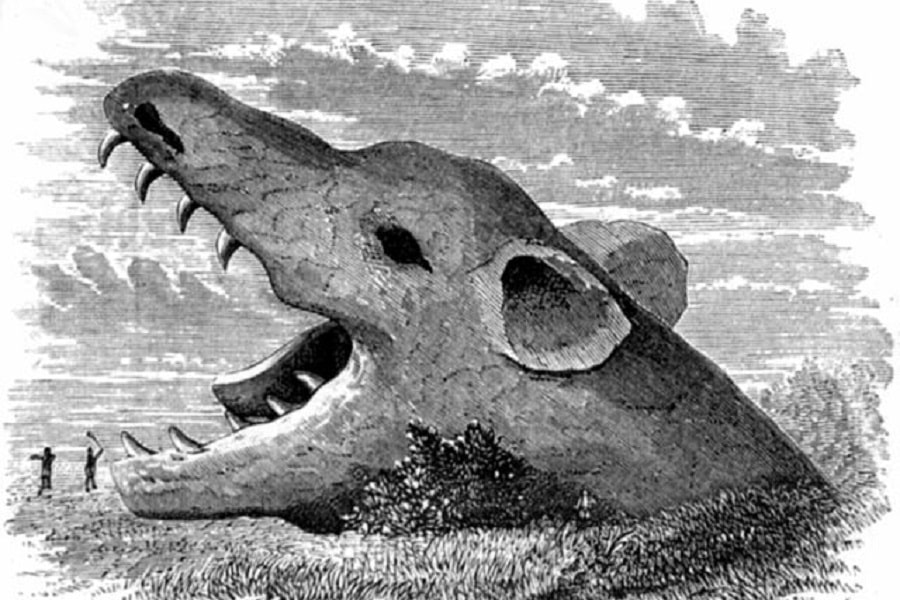
Legendary Items
The legendary items of Norse mythology act as defining traits of the characters they are attached to. For example, there would be no Thor without Thor’s hammer; Odin wouldn’t be nearly as powerful if it wasn’t for his spear; likewise, the gods would be just supernaturally-gifted mortals if it weren’t for Idunn’s apples.
- Brisingamen
- Dainsleif
- Draupnir
- Gjallar
- Gleipnir
- Gungnir
- Hringhorni
- Hymer’s Cauldron
- Idunn’s apples
- Járnglófar and Megingjörð
- Lævateinn
- Mjölnir
- Skíðblaðnir
- Svalin

Famous Artworks Inspired by Norse Mythology
Artwork depicting Norse mythology is epic. From the Viking Age, much of the surviving artwork is in the Oseberg style. Noted for its interconnectivity and its use of zoomorphic forms, the Oseberg style was the dominant approach to art throughout much of Scandinavia during the 8th century CE. Other styles used include Borre, Jellinge, Mammen, Ringerike, and Urnes.
When looking at pieces from the time, wood carvings, reliefs, and engravings were popular. As was filigree and the use of contrasting colors and designs. Wood would have been a common medium, but its susceptibility to damage and deterioration means that only a small fraction of wooden artworks have survived to the modern world.
The Oseberg longship (from which the style gains its name) is one of the best surviving examples of Viking craftsmanship. It displays the use of ribbon animals, gripping beasts, and ambiguous shapes that are staples of the Oseberg style. The most surviving pieces of Viking art are various metal works, including cups, weaponry, containers, and jewelry pieces.
There is plenty of mystery surrounding the meaning of Viking artworks as they pertain to Norse mythology. Nonetheless, they offer a spectacular look into the lives of the ancient peoples of northern Europe.
Famous Literature about Norse Mythology
As with most ancient religions, adaptations of Norse mythology to literature originate from its oral traditions. Northern mythology, as it stands, is filled with fantastical realms and compelling deities. Efforts to translate rich oral history into written literature began around the 8th century CE. Primeval stories, once only spoken, were bound within the pages of books by the 12th century CE and made increasingly popular by Snorri Sturluson’s Prose Edda.
Most literature about Norse mythology is from Scandinavian countries during the Middle Ages. Written as either skaldic poetry or Eddaic verse, these pieces dealt with famous legends and historical figures. More often than not, the reality was intertwined with myth.
- The Poetic Edda
- The Prose Edda
- Ynglinga Saga
- Heimskringla
- Heiðreks Saga
- Völsunga Saga
- Völuspá
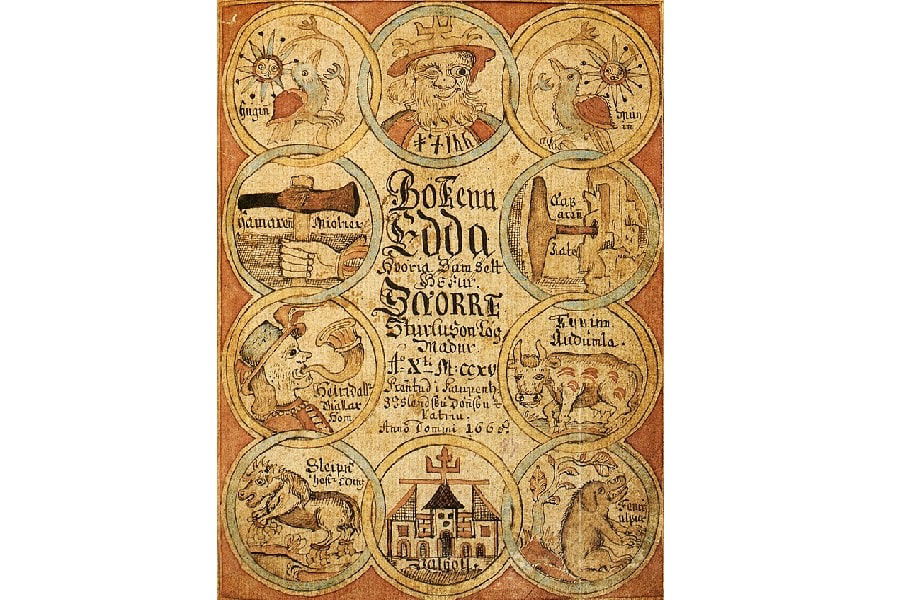
Famous Plays on Norse Myths
Not many adaptations of famous tales from Norse mythology have made it to the stage. Performances, unlike those of the Greeks and Romans, were not tied to a particular deity. In more recent years there have been attempts to bring myths to the stage, especially through smaller theater companies. Vikingspil, or Frederikssund Viking Games, has been one of the companies to have hosted dozens of performances in the past. As of 2023, their theater is staging Sons of Lodbrog, which deals with the unrest that follows the death of the hero, Ragnar Lodbrok.
Other attempts at interpreting ancient Norse mythology have been attempted in Wade Bradford’s Valhalla and The Norse Mythology Ragnasplosion by Don Zolidis.
Norse Mythology in Films and Television
When discussing Norse mythos in popular media, there are a lot of fantastical elements at play. Between the popularity of the Thor films from the Marvel Universe and the hype that surrounds the show Vikings, there is plenty of Norse mythology media out there. Most of them capture the essence of the myths: the splendor, the cunning, and the heart of them all. You’ll be cheering for the heroes and cursing the villains.
Much of what is taken from Norse mythology for use in films and television has been from the Poetic Edda and the later Prose Edda. These pieces of literature, though our lifeline to the oral traditions of Norse paganism, attempt to capture long ago myths. The earliest piece in the Poetic Edda may still have been written 300-400 years after the inception of Norse mythology.
Even God of War: Ragnarök, though it has a beautiful story, amazing graphics, and on-the-nose characterization of the gods, could only do so much with the information that is available on Norse myth. By no means does that mean those experiencing it love it any less.
The lack of readily available knowledge of Norse mythology can lead artists and writers alike to make their own interpretations. It is fair to say that pop culture has taken a few modern liberties with its interpretation of traditional Norse mythology. While there are many wonderful shows and movies that attempt to capture the soul of Norse myths, directors and screenwriters can only hope to do justice to the lost oral traditions.